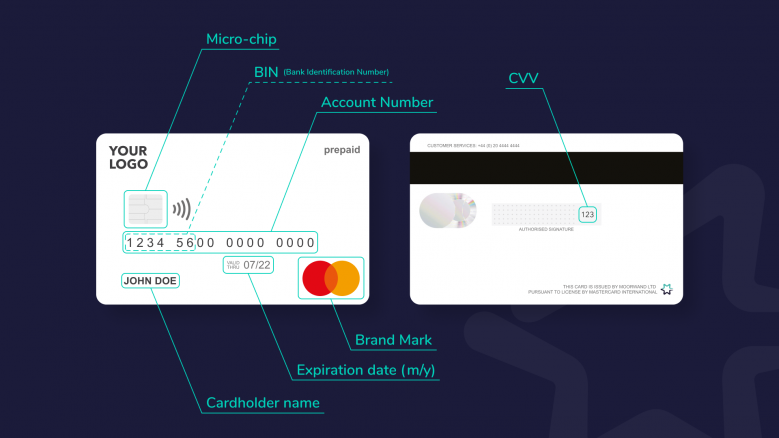Front of the card
The microchip
EMV stands for Europay, Mastercard and Visa. This computer chip creates a unique transaction code for each purchase you make.
BIN
The BIN (Bank Identification Number) relates to the first 4/6 numbers of a payment card and identifies the card issuer (bank or financial institution), the scheme acceptance network (Mastercard, Union Pay, Visa etc.) and the type of card (whether it is credit, debit or prepaid). It is an important element for the identification of transactions with merchants.
The BIN Sponsor empowers the programme manager to take control of their programmes such as eWallet accounts, prepaid cards or debit cards without the need for an individual e-money license or direct scheme membership.
Account Number
The long number across the middle is the permanent account number or PAN. The number identifies the institution that issued the card and the cardholder.
Cardholder name
Name of the account holder.
Expiration date
This appears as ‘end’ on some cards. Your card will expire on the last day of the month shown.
Brand Mark
Card networks (also known as schemes) control transactions between credit card issuers and merchants. UK card schemes include Mastercard, American Express, Visa and Maestro. If a merchant displays this logo, you’ll be able to use your card there.
There is also a contactless symbol on the front of many cards, which means that cards with this symbol are set up for contactless payments. You can use them to make payments of up to £45 without punching in your PIN.
Back of the card
CVV
The CVV/CVC code (Card Verification Value/Code) is located on the back of your credit/debit card on the right side of the white signature strip.


 BACK
BACK

